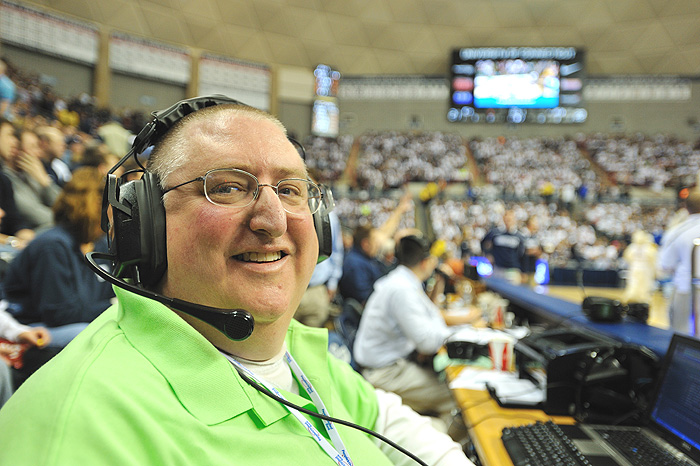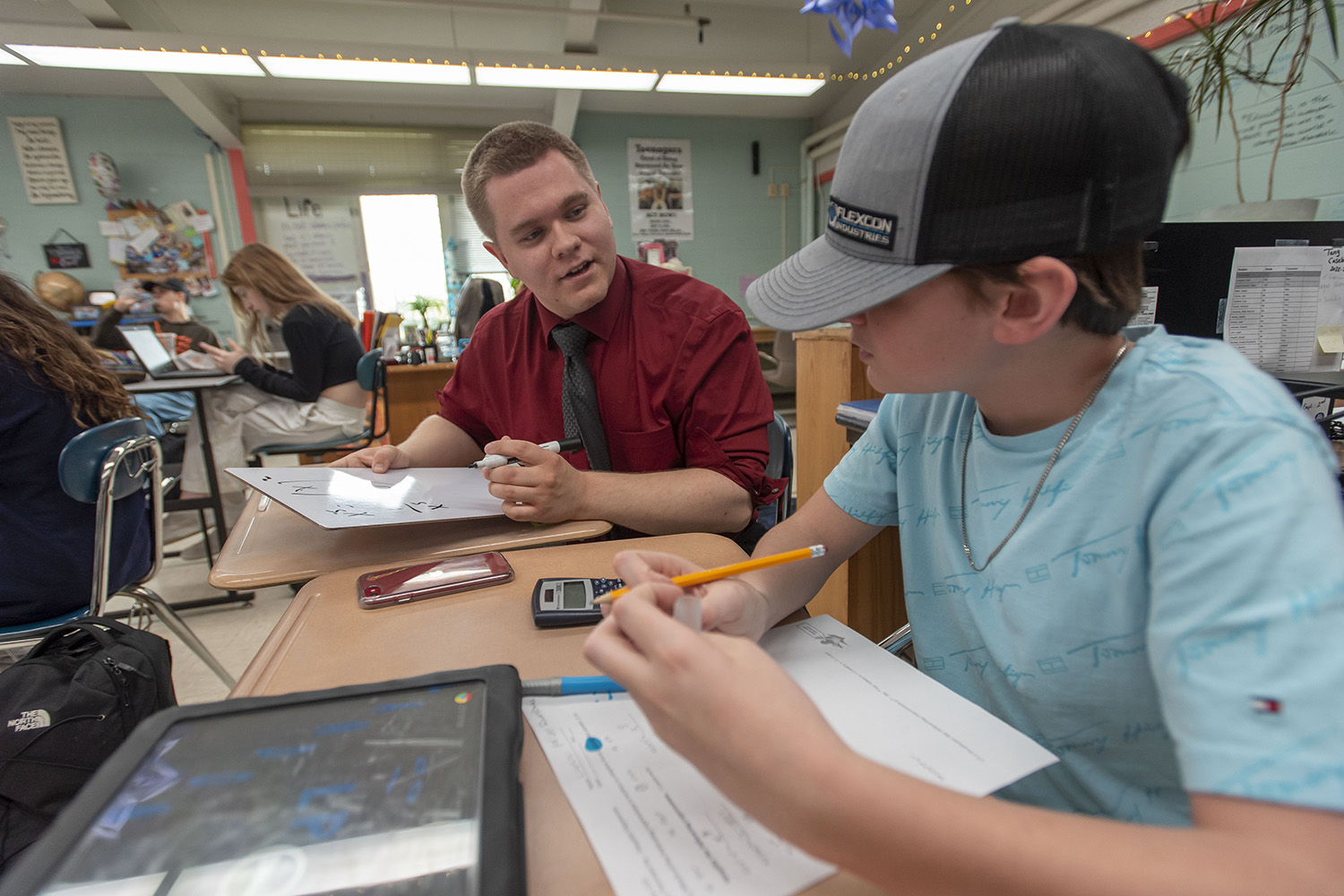
Andy Prince says he was preordained to work with numbers. His father was an accountant, and he liked math as a student.
“I have to admit I’m a math nerd,” says Prince, a 1985 UConn graduate who has been the statistician for Husky men’s basketball and football games for nearly 30 years. “I was very good in math, very average in English. I have a crazy stupid human trick I can do. You can roll 10 dice and I can tell you the total.”
Having served as the sports statistician while a student at William H. Hall High School in West Hartford, Prince thought he might try to do the same when he enrolled at UConn. In his freshman year, he walked into the office of then men’s basketball head coach Dom Perno to ask about the position. Perno sent him to sports information director Tim Tolokan, who had a more immediate need – help with stats for the upcoming football game. By the time basketball season arrived, Prince had a paying student job that he could continue while earning his accounting degree.
“When college ended, I tried to see if I could still do it,” says Prince, who today operates his own accounting business in Farmington. “I was able to. It’s been so much fun.”
During football season, Prince stands in the back of the press box high above Rentschler Field, using binoculars to call out the numbers of players who run, catch, and tackle and yardage markers, as others enter the information into a computer program.
“A lot of football is waiting,” he says. “There’s a run, a huddle, then a play. But it takes one play and the world ends. Something goofy will happen – a pass is tipped. If there’s a turnover, you pray for a TV time out. We watch the TV monitor quickly to check. When there are teams that don’t throw the ball a lot, the games go quickly.”
Mike Enright, associate director of athletics for communication says Prince is an invaluable part of the operation: “He’s a professional, and he takes his job seriously. He’s equal to UConn as to the opponents. We love having him around. At times, he brings much-needed levity to the situation.”
Sitting near center court during home games at Harry A. Gampel Pavilion or the XL Center, Prince leads a statistics team of UConn alumni who wear headsets so they can communicate amid the roar of crowd. Using a code of letters for the kind of shot taken or for rebounds, Prince is like a radio play-by-play announcer providing the details to Sherrie Muncy, a 1992 graduate who types the coded information into a computer which translates the information into a narrative and neat box score. Doug Barkus, a 1990 alum, keeps track of all player substitutions. Sean Laudati, a 2009 graduate who does statistics for the women’s basketball games, provides back-up support for Prince’s initial information.
“Let’s say after the opening tip that Kemba Walker gets the ball, throws a pass to Jeremy Lamb, who takes a three-pointer that misses. Then Alex Oriakhi gets the rebound, dunks it, and gets fouled,” Prince says. “I would say: H-Ball, Y03, R34, D34, Q no assist, FV22, and EH34. H is for the home team, V for the visiting team. The letters identify what happened: jump shot, layup, assist, rebound, dunk, block, turnover, dunk, or foul.”
Having a prime seat for UConn basketball and football has provided memorable moments for Prince.
“I don’t know that most scorers have the access that Coach Calhoun has allowed to me,” he says. “After we won the first men’s championship in 1999, I was one of about 10 others in the locker room when he came in to speak with the team. The most tingly feeling I’ve had was the very first game in Gampel, when we played St. John’s. We now had our beautiful place and it was the loudest thing I could possibly imagine and we beat them.”


